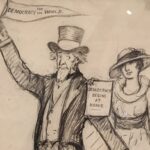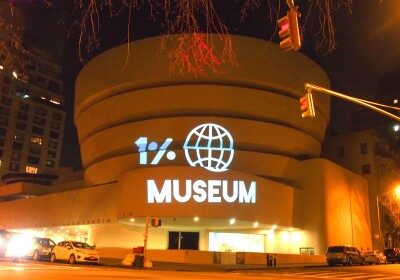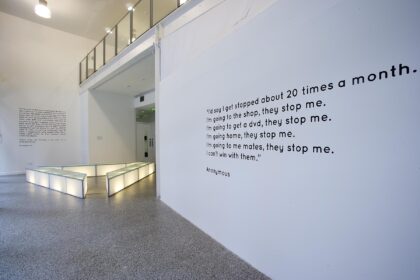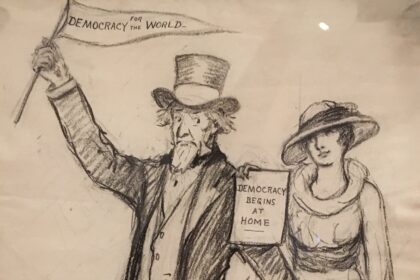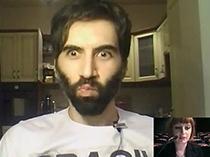Yates McKee, Strike Art, (Verso Books: London, 2016)
Paloma Checa-Gismero
In his recent book, Strike Art, Yates McKee authoritatively claims that “Occupy as a movement grounded in direct action decisively changed horizons in which art is produced, received, and judged in a manner comparable with earlier moments of rupture.” (237). This risky account of Occupy Wall Street’s centrality in enacting a change of paradigm in contemporary art practice is an enthusiastic and New York-centric attempt to expand the historical canon of Western avant-garde art from one of its centers. With a slight manifesto mood, Strike Art is a well written, balanced middle point between narrative and analytical accounts of Occupy Wall Street and selected peripheral events. The book invites readers to rethink when, how, why, and by whom do particular experiences enter the canon as transformative historical events.
In Strike Art. Contemporary Art and the Post-Occupy Condition, McKee dives into detailed analyses of the historical precedents for what he labels as ‘strike art’: “not a cessation of art entirely, but a repurposing thereof as a form of collective creativity and resistance in solidarity with all workers’ struggles” (156). Despite the timely interest in revisiting the aesthetics of protest, McKee’s argument is rooted in a defense of New York artworld’s protagonism in this operation, and fails to acknowledge the loaded history of relations between art production and political activism predating his case of analysis- in the city from where he writes and elsewhere.
Strike Art is structured over four chapters, an introduction, and a conclusion. The introduction is a diligent exposition of the political and historical context for his neologism, ‘strike art’. In it, Yates McKee places Occupy Wall Street as logical heir of historical Western avant-garde’s concerns with the divisions between art and life, as well as of the different solutions artists have proposed to transcend this dichotomy. Beginning with evocations of William Morris’s mystification of the 1871 Paris Commune, McKee recruits in his lineage familiar names like Dada, the Surrealists, the Russian Constructivists, and the International Situationist group. Within the United States McKee claims Occupy Wall Street’s indebtedness to experiences like the San Francisco diggers, Guerrilla Television and Third World Newsreel, and the Black Panthers’ revolutionary cultural apparatus, among others. Further, McKee appears deeply invested in defending New York City as an exceptional scenario for the change of paradigm in contemporary art practice that he describes, a claim that makes of obligatory recall the pioneer institutional critique programs, actions, and achievements of the Art Workers Coalition and New York Radical Women.
Chapter one, Contemporary Art and the Politics of Democracy 1987-2011, provides clear evidence of McKee’s choices for the artistic, political, and theoretical precedents of Occupy Wall Street. In the arts, suspects like Krzysztof Wodiczko, Martha Rosler, Group Material, and ACT UP in the 1980s; Louis Hock, David Hammons, Ricardo Dominguez, and Allan Sekula in the 1990s; and the Yes Men, Paul Chan, and Allora & Calzadilla in the 2000s, dance along with names from the critical and curatorial New York apparatus like Rosalyn Deutsche, the Whitney Independent Studies Program, Nato Thompson and Gregory Sholette. Also key in McKee’s argument are the important protest events of November 1999 around the World Trade Organization ministerial meeting in Seattle. It is in the context of these demonstrations’ “anti-monumental aesthetics and participatory joy of both producing and deploying puppets as part of the expanded milieu of street theater” that the author finds the kernels for Occupy Wall Street’s aesthetics, which, borrowing a notion from David Graeberg, McKee designates as “mythological warfare”. The chapter also features an exposition of Claire Bishop’s debate with Brian Holmes over the extent to which aesthetic forms can be abstracted from their political dimension, a controversy that the author posits as the climate of dissensus surrounding the emergence of Occupy Wall Street. McKee’s own alignment with Claire Bishop’s critique of idealizing of consensus leads him to warn his readers not to mistake Occupy Wall Street with real life, since, instead, the former was articulated around “surreal” encampments (81). I would be curious to see how surreal did other OWS participants believe the encampments to be. To close the chapter, the author celebrates the coincidence in time of Occupy Wall Street and Living as Form, an encyclopedic exhibition on socially engaged art curated by Nato Thompson that was on view at the Historic Essex Street Market in the Lower East Side at the same time of Occupy. After a brief analysis of Living as Form the chapter ends with the author’s remembrance of Thompson’s “exhortation that the audience visit a little-known plaza in the financial district called Zuccotti Park” (79). Here, McKee forces an equivalence between the bigger and multifaceted movement that Occupy Wall Street was and the presentation of socially engaged art projects within the context of an important art institution such as Creative Time, directed by Thompson. This correlation between the aesthetics of Occupy Wall Street and practices activated through art institutional frameworks is questionable, and would have been better backed up had the author included in his history the plural accounts by Occupy Wall Street participants on the matter, an absent counterpoint all through the book.
The Arts of Occupation: Zuccotti Park, Site-Specificity, and Beyond is the book’s second chapter. This section offers readers a thorough account of the spatial and organizational dimensions of Occupy Wall Street, its inception, and a number of agents highlighted by McKee as activators of the event’s early days. Groups like 16 Beaver and Adbusters, and their poster-based call to “occupy Wall Street” receive favored attention in McKee’s account. The author describes Occupy Wall Street as a “biopolitical assemblage”(101), site-specific in its situatedness in Zuccotti Park and the bodies of conveners, and nomadic in its reproducibility and ability to morph into other manifestations, as well as to adapt to other geographic emplacements. Occupy Wall Street’s instances of political activity, like its General Assembly, are for McKee evidence of the movement’s value as a “pedagogical laboratory”, where the inherent antagonism of multiple dissonant voices coexistent in the experience work, for him, in the ways of Bakhtinian heteroglossia confined to the limits of the event. Moreover, McKee describes the occupation after Judith Butler’s own understanding of the experience as a “structure of affect [and] basic social bond” (107), and Silvia Federici’s remarks on the “communalization of social reproduction involved in the camp” (108). This second chapter concludes with an in-depth analysis of the negotiation between the movement’s art branch -which came to be called Occupy Arts- and the real-state entity Trinity Wall Street to establish an outdoor satellite occupation in a nearby square before the eviction from Zuccotti Park happened. This fascinating section elucidates on the conflicts inherent to collective organization and their surfacing in instances of negotiation with power.
Following is Artists, Workers, Debtors, the book’s third chapter. In it, we read McKee’s reconsideration of the subject behind artistic production in a context of widespread social indebtedness, a subject that he calls “the artist as debtor” (60). At the foreground is the class denominator of “the 99%” that gained visibility at Occupy and has served since to wield class inequality protests in the United States. The author carries through an honest attempt to evaluate the movement’s complex self-portrayal as part of the broader class formation of neoliberalism’s victims, acknowledging Occupy’s diversity and inherent class and racial disparities. Further, McKee revisits several examples of systemic crisis in which creative producers have reevaluated their relationship with the dominant ideologies in the U.S.. Instances of this are the 1930s Artists Union, 1970s Art Workers Coalition, and several 2000s examples like Teamsters Local 814 and W.A.G.E., where artistic work was politicized in relation to Keynesian labor reforms, the art system’s direct involvement in the Vietnam War, and its current instrumentalization under Richard Florida’s rubric of the “creative class” (139). The chapter provides a compelling account of Occupy’s move towards the art institution, the formation of Occupy Museums, and the celebration of May Day in the spring of 2012. The latter, a projected citywide direct action event meant to “help solidify an enduring coalition process with immigrant and labor groups for long-term movement building” (149), materialized instead in a street march and rally of smaller dimensions. But the author, in examining the supposed failure of this and alike events, reminds readers that “it is precisely the dream-like quality of May Day that made the artistic production surrounding it so interesting”, in an argument that reminds one of past episodes of celebration of avant-garde’s inherent criticality by negation of content. Detailed evaluations of the protest actions performed by Strike Debt and G.U.L.F. close the chapter. McKee presents them as direct unfoldings of Occupy, in the context of nation-wide home foreclosures and elite art institutions’ labor malpractices.
The book’s last chapter, On Flooded Streets and Breathing-in-Common: Climate Justice, Black Lives Matter, and the Arts of Decolonization, goes past Occupy’s historical specificity to engage in an analysis of the artistic dimensions of the Black Lives Matter movement and climate justice activism in the U.S. While acknowledging the risk of aestheticizing crisis that this kind of analysis entails, McKee remarks that “these articulations have in turn overlapped in various ways with the political spaces, tactical repertoires, and social networks surviving from Occupy” (187). What seems to be ambiguously exposed is that these spaces, repertoires, and networks preceded Occupy Wall Street, and that their strength roots in a decades long history of racial and environmental justice activism in this country. Although the chapter provides thorough accounts of these movements’ most recent use of posters, masks, and community art forms, the author is not convincing enough in his defense of a “post-occupy condition” (36). While McKee does a good job detailing resonances between these protest movements, he runs into more problematic ground when he implies that Occupy was a cultural wellspring for movements such as Black Lives Matter, especially since he does not carefully examine how many aspects of these movements predate and feed Occupy.
Yates McKee’s enamored defense of Occupy Wall Street’s organicity weaves through the book, placing him in the uncomfortable seat of the avant-garde trials. As McKee quotes from a MTL manifesto: “Art does not dissolve into so-called real life. Art defamiliarizes life, rendering it surreal (…) We strike art as a training in the practice of freedom” (34). Much on the issue has already been debated in the e-flux conversation dedicated to Strike Art. Yet I would like to insist on the risks of defending the “surreal” bracketing of life that, according to McKee, Occupy was: we should not forget that this very bracketing is the necessary requisite for the institutionalization and cooptation of the ideas freely and beautifully expressed, in this case, with Occupy’s “mythological warfare” (56). But, again, according to the author, it might be worth keeping art intact as an “unique realm to be protected from either brute instrumentalization or compensatory participation”, as an (for some) apolitical space of free experimentation and formal renovation. This is a problematic point. Defining spaces of enclosure to protect aesthetic production, as in its collection and display in museums, for instance, is unquestionably political. Always. The will to freeze and bracket art as an “unique realm” lays behind a tradition of avant-garde museology and critique based on translating and repurposing the original values of aesthetic production after the class interests of the art institution.
In Strike Art, McKee borrows sociologist Marina Sitrin’s defense of social movements as self-organized social laboratories able to unfold unexpected forms of social relations and affective dimensions, as well as to generate political, symbolic, and economic practices of their own. In addition, according to McKee, Occupy Wall Street was able to articulate political subjectivities from collective needs and desires, following Hardt and Negri’s own reading of the movement as a “declaration of independence by the multitude” (21). This characterization of the revolutionary nature of the movement sets a good ground for an extensive exploratory analysis of the artistic practices that occurred within it. Moreover, Strike Art provides readers with the author’s exposition of Occupy Wall Street’s structure, its class composition, and spatial dimension, all in the light of a movement ethos of “democratic empowerment and horizontally distributed ‘leaderful’ participation” (22); again, a point that would have been more convincing if diverse voices articulated from the movement had been included in McKee’s account. Further, McKee insists in Occupy Wall Street’s disruptive nature by borrowing Alain Badiou’s notion of the event, a truth-leading dramatic appearance of those hitherto excluded from the state of a situation. In this sense, Occupy Wall Street brought the class of the 99% to Wall Street, rendering visible the claims and bodies of those left out from neoliberalism’s core epistemological center, yet victims of its ordering of the world.
Furthermore, Yates McKee agrees with anarchist anthropologist David Graeber in foregrounding the tight bond between collective resistance and collective invention, defending that “it is in such situations that the sensory forms and imaginative visions of art per se are liberated from their institutional enclosure to participate in the construction of new forms of life-in-common” (16). A companion text for McKee’s volume is Graeber’s own account of Occupy Wall Street’s success, The democracy project: A history, a crisis, a movement, which, like Strike Art, was written from the author’s own involvement in the experience. Both volumes share the advantages and risks that can come when an analyst is also a protagonist in the case that they study. Other timely companion readers for Strike Art are Nato Thompson’s Seeing Power. Art and Activism in the 21st Century (2015), and John Robert’s Revolutionary Time and Avant-Garde (2015).
As readers interested in the aesthetics of protest would agree on, the history of urban political protest action in the city of New York and beyond has been broadly documented in academic and non-academic forums. Aesthetic manifestations derived from these structures of affect have taken place in a number of forms. More, the anti-capitalist or anti-imperialist nature of movements articulated around the occupation of public/private space and buildings has a long history in the United States, Europe, Latin America, Asia, Africa, and Oceania, that Occupy Wall Street undeniably fed from. Although McKee is aware of “the limitations of OWS as a political formation lacking the capacity to incarnate its universalizing figure of the 99% in a sustained cross-sectoral alliance or social movement”, the ways in which he defends its historical role in setting the basis of a general post-Occupy condition lays claim to the centrality of New York City and its agents in the broader global art system, of which the author is already a participant member. Must it not be forgotten that when writing from the centers of knowledge making, epistemic claims should incorporate an acknowledgement of their insertion in specific frames of enunciation, as well as of the limitations, power, and risks inherent to them. For political activism on the streets is not a new phenomenon, nor is it circumscribed to the walls of New York City nor McKee’s immediate circle. If the context for Strike Art is that of a neoliberalism in which the production, circulation, and consumption of artworks is ultimately legitimated by the market, then Strike Art could be more reflective on the particular geographies and public repercussions of its argument.
Like most historical imperial capitals, New York is a great city. Like other protest movements taking place in 2011, before, and after, Occupy Wall Street is a fascinating case study on how class grievances are articulated, new subjectivities come to be enunciated, and diverse forms of art production come to aid in the amplification of political dissent. Strike Art is a well-crafted historical narrative of the aesthetic dimensions of Occupy Wall Street and other affiliated instances of activist cultural production, but its geographic narrowness and its emphatic defense of Occupy Wall Street’s aesthetic exceptionality fail to convince us readers that the event marked a turning point in contemporary art.
Paloma Checa-Gismero is a PhD Candidate in Art History, Theory, and Criticism at the University of California, San Diego.



